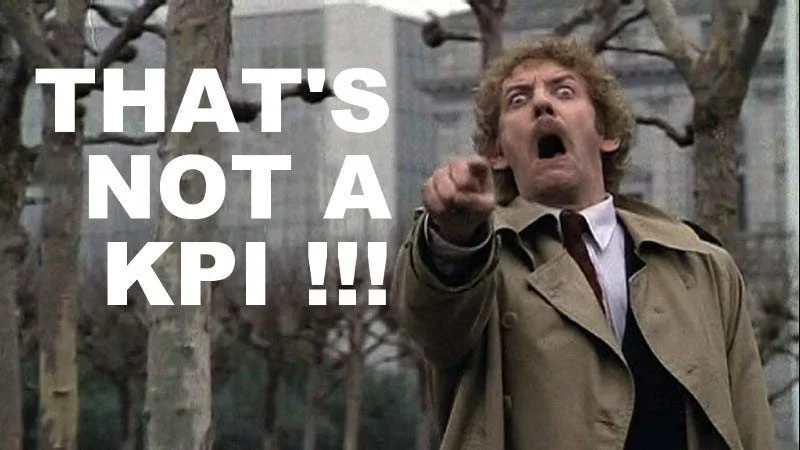SPI = OD² + SE: The Hidden Formula for Business Clarity and Performance!
I was in discussions with a CEO of one of the businesses I'm assisting in scaling, earlier this week and we were chewing on the importance of clear performance markers for each and every individual in a business linked to clear key performance activities to form the baseline of developing clear performance indicators to achieve clear deliverables for each person to drive the business forward with clarity, with a clear expectation of what needs to be achieved, how, by when, and why. It made me think of so many times that I've been parachuted in to rescue a business where these basic fundamentals are not in place to drive a business forward, and I find myself having the same conversation. It’s not about sales targets, marketing funnels, or the latest AI tool promising to make coffee and strategy at the same time.
It’s about clarity — or rather, the lack of it.
Because without clear deliverables per person, linked to clear key performance activities (KPAs) and key performance indicators (KPIs), a business can quickly turn into a blur of busy people doing impressive-looking things that don’t actually move the needle – or as I always say, “never confuse motion with progress!”.
The Great Corporate Mirage: Everyone’s Busy, Nobody’s Productive, aka “The Rocking Chair Effect” – moving, but going nowhere!:
I’ve been parachuted into more than a few organisations where chaos masquerades as progress. People are scurrying around, attending back-to-back meetings, sending emails at 11 p.m., and proudly declaring how “flat out” they are.
Yet when you ask, “What exactly are you working to deliver, by when, and how will we know when it’s done?” — there’s a pause. Then come the classic responses:
“Well, it depends…”
“We’re still aligning on that.”
“I’m waiting on someone else.”
That’s when I know the business isn’t suffering from lack of effort — it’s suffering from lack of direction.
The Ivory Tower Disconnect:
Here’s the uncomfortable truth: this fog often rolls down from the top.
As businesses grow, many leaders unintentionally drift into the Ivory Tower Zone — where strategies are drawn up in boardrooms far removed from where value is actually created. Somewhere between the glossy PowerPoint slides and the shop floor, clarity evaporates.
The result? Teams below are left guessing what “success” looks like, while leadership wonders why execution always feels like pushing jelly up a hill, whilst the Ivory Tower becomes riddled by Armchair General full of piss and vinegar and zero substance!
Deliverables, KPAs, and KPIs: The Holy Trinity of Clarity:
Let’s break it down:
Deliverables are the what. The tangible outcomes each person is responsible for. (“Deliver the new CRM system by Q2.”)
Key Performance Activities (KPAs) are the how. The repeatable actions that directly influence those deliverables. (“Meet with three clients weekly to define requirements.”)
Key Performance Indicators (KPIs) are the proof. The metrics that tell us whether those activities are delivering the right results. (“Customer adoption rate above 80% within three months of launch.”)
When these three align — and everyone from the CEO to the customer service rep knows their own piece of the puzzle — the business starts to hum.
Evolving With the Business Rhythm:
The real challenge isn’t setting deliverables and KPIs — it’s keeping them alive.
As a business evolves, markets shift, teams grow, and strategies pivot. Yet many organisations treat their KPIs like stone tablets handed down from a mountain: permanent, unchangeable, entire team smeared with the same numbers and usually outdated six months later.
Performance frameworks must evolve with the rhythm of the business — adapting to ensure sustainable performance improvement rather than rigid compliance.
That’s where organisational design (OD) meets organisational development (also OD — confusing, I know). Design sets the structure; development ensures the people inside it grow, adapt, and thrive, AND are the right people for the role, not merely “jobs for friends” or “but he/she’s been here for 20 years – the loyalty trap” or “bums on seats”.
The Formula: SPI = OD² + SE:
Over the years, I’ve come to describe the relationship like this:
Sustainable Performance Improvement (SPI) = Organisational Design & Organisational Development + Strategy Execution
In plain English:
Without a structure built for clarity, even the best strategy will crumble.
Without the right development — training, coaching, mentoring — the people inside that structure won’t have the skills or confidence to execute it.
And without crisp deliverables, KPAs, and KPIs stitching it all together, you’re just hoping for performance rather than engineering it.
The “Obvious” Problem
I can already hear some of you saying, “But MC, this is obvious!!!”
Well, here’s the thing: it’s only obvious until you try to find it in practice.
Think about your own career — past, present, or future. How many times have you had crystal clarity on your deliverables, your key activities, and your performance indicators — all the way from the top to the bottom, left to right of the organisation?
Exactly.
Clarity might sound like management 101, but it’s astonishing how rare it is in the wild.
Final Thoughts: Clarity as a Competitive Advantage:
Businesses don’t fail because people aren’t smart or motivated. They fail because the energy of their people isn’t pointed in the same direction.
When every individual knows what they must achieve, how, by when, and why, you transform confusion into cohesion.
So, before you chase the next shiny strategic thing, ask yourself a simple question:
“Does everyone in this business know exactly what they’re delivering — and how success will be measured?”
If the answer is anything less than an emphatic yes, then you know exactly where to start.
Comments welcomed, as always!
MC

